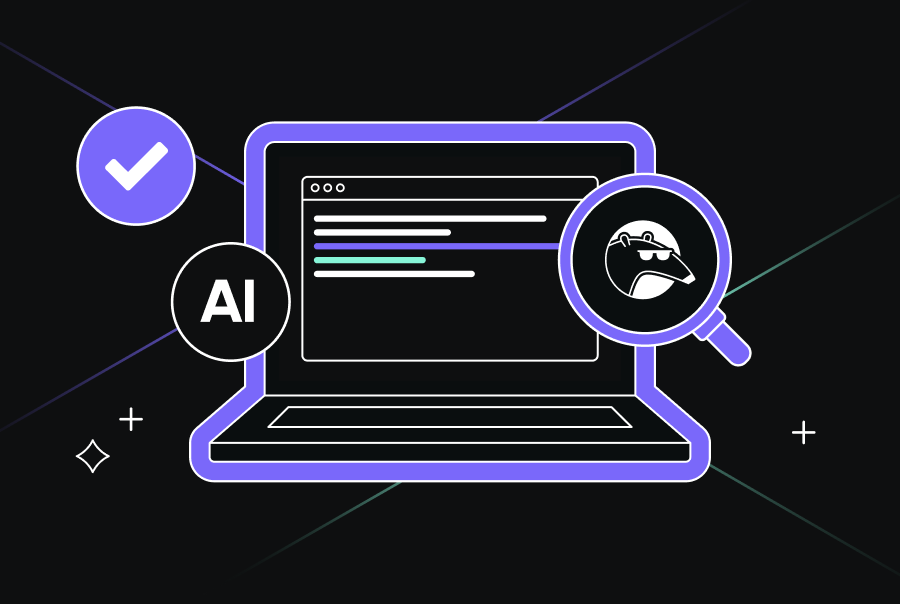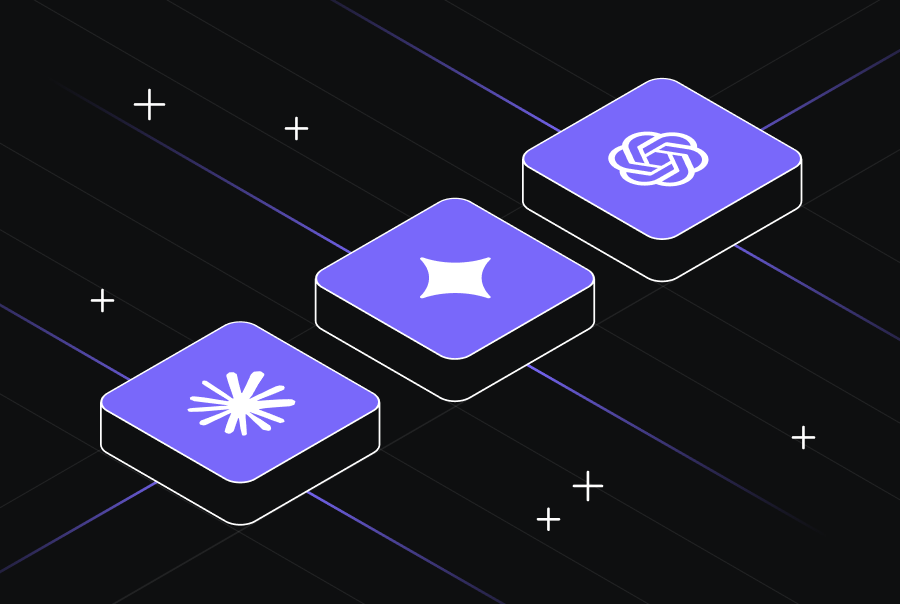From Agents to the Second Brain
AI in software development has gone through clear stages of evolution, each one expanding what developers can delegate to machines. Yet with every leap forward, one critical gap has remained: the lack of memory and continuity.
The real problem AI hasn’t solved
AI already speeds up coding. But speed without memory creates fragility. Teams can generate more code than ever, yet struggle to ensure that code reflects their architecture, standards, and risk posture.
Adoption keeps climbing: Qodo’s 2025 State of AI Code Quality report found that 82% of developers now use AI coding assistants daily or weekly. Yet 76% say they don’t fully trust the generated code, and two in three believe AI often misses critical context.
The next leap isn’t “more generation.” It’s organizational memory. A second brain that captures standards, learns from practice, and applies that knowledge everywhere code is created and reviewed.
How we got here
The evolution of AI in software development has never just been about new features. It’s been a journey toward greater responsibility and context. Each generation brought more autonomy, but also revealed the limits of stateless assistance, and the need for more memory, context and control.
Generation 1 – Autocomplete: Speed without depth
The earliest wave gave us next-line predictions. It shaved seconds off typing but offered no understanding of architecture, standards, or intent. It was a spark, but a shallow one.
Generation 2 – Chat and function generation: From typing to instructing
Chat assistants allowed developers to describe what they wanted and receive working code. Suddenly AI wasn’t just completing tokens, it was generating whole units. Yet these assistants forgot everything the moment the exchange ended.
Generation 2.1 – Early agents: The first glimpse of autonomy
Agents could execute small, multi-file tasks. This was the first sign that AI could act more like a collaborator. But the context was thin, and the knowledge was temporary. Autonomy without memory is fragile.
Generation 3 – Agentic workflows: Scale meets the quality bottleneck
Agents have stepped out of the IDE and into the terminal, running tests, executing commands, even proposing PRs. Code volume surged. But with scale came a harder problem: ensuring consistency and quality. Without shared memory, however, organizations hit a wall.
Analysts are already warning that without governance, many agentic projects will stall. Gartner predicts that by 2028, one-third of enterprise applications will include agentic AI, but over 40 percent of agentic projects will be scrapped by 2027 due to cost, complexity, and lack of value. The lesson is simple: autonomy without memory fails.
The trajectory is clear: we’ve moved from convenience, to autonomy, and now to the stage where AI must have memory.
A second brain is the missing layer that turns AI from a stateless generator into a stateful partner. It doesn’t just produce code, it remembers organizational standards, applies them in real time, and tracks whether they’re being followed. In doing so, it elevates AI from a helpful assistant into a responsible system, one that can scale with the complexity and expectations of modern engineering organizations.
Generation 4: the second brain
Most AI tools today are powerful but stateless. They generate output in the moment, then forget everything once the task is done. They accelerate individual productivity, but they don’t accumulate or apply the deeper knowledge that an engineering organization relies on.
The second brain changes that. It’s not just another assistant, it’s a system of continuity and accountability. With the right design, AI can move beyond one-off generation and act as the steward of organizational memory. That means:
- Learning from past interactions like scanning pull requests and Slack/Teams discussions to capture recurring standards or logging how architectural trade-offs were resolved. This “PR memory” preserves decisions that would otherwise vanish into history.
- Structuring knowledge into reusable rules expressed as transparent, semi-structured standards that developers can read, edit, and refine.
- Delivering context in real time. Imagine AI reminding you of a security guideline in your IDE while coding, flagging an architectural mismatch during a PR review, or surfacing relevant design discussions when planning a new feature. This “context delivery” ensures rules are applied where they matter most.
- Adapting over time. The second brain doesn’t assume rules are static. It tracks which suggestions are accepted, overridden, and why. Over time, the system reflects both organizational intent and lived practice
This is what makes the second brain essential: it turns AI from a temporary productivity boost into a sustainable organizational system. Instead of just producing code, it preserves and enforces the culture, architecture, and quality practices that define a development team.
What the Second Brain Unlocks
The second brain is not just about improving individual productivity. It changes how entire engineering organizations operate. By capturing and applying institutional knowledge, it opens up new possibilities that static documentation or one-off AI assistants cannot deliver.
The second brain is not only about improving productivity, it reshapes how engineering organizations operate. By capturing and applying institutional knowledge, it unlocks possibilities that static documentation or isolated AI tools cannot deliver.
- Faster onboarding: new engineers inherit standards and practices from day one.
- Proactive quality: issues are prevented early, so reviews focus on design and intent, not style.
- Cross-team alignment: practices stay consistent across services and repositories.
- Governance and compliance: rules have clear lineage and can be tracked and audited.
- Healthier codebases: duplication decreases, best practices evolve, and costly refactors are reduced.
The real unlock is cultural. Expertise is distributed more evenly, dependency on a handful of senior engineers decreases, and AI becomes part of the organization’s decision-making fabric. This shift directly impacts code quality. Standards are no longer applied inconsistently or lost in handoffs. Instead, they become part of the daily workflow, ensuring that every contribution aligns with the organization’s best practices. Quality stops being a gate checked at the end of development and becomes a continuous property of the codebase itself.
From models to systems
The conversation around AI in software development often centers on models: which one is smarter, faster, or cheaper. But bigger models alone won’t solve the challenge of sustaining code quality at scale.
A model is great at producing an answer at the moment. A system is what ensures those answers are consistent, explainable, and aligned with an organization’s needs over time. The second brain belongs firmly in this category.
Where models provide raw intelligence, systems provide the structure of trust: memory to capture knowledge, engines to consolidate it into reusable standards, context delivery to surface it at the right moment, and governance to keep it transparent and adaptable.
The distinction is critical. Just as databases only became transformative when applications were built on top of them, models reach their potential only when systems like the second brain provide memory, governance, and context.
Qodo Aware, Qodo’s recently released context engine shows what this shift looks like in practice. Rather than trying to make models smarter on their own, it provides them with deep contextual intelligence. It indexes and understands entire codebases, spanning multiple repositories, so AI agents can reason about architecture, dependencies, and long-term design decisions. It powers different modes of reasoning, from deep research to issue finding, and integrates through the Model Context Protocol to bring this context into any tool developers already use.
This approach demonstrates what a second brain really is: not just generating code, but grounding AI in the knowledge of how systems actually work, why decisions were made, and how changes ripple across an organization. By embedding that continuity into workflows, tools like Qodo Aware move AI from being a short-term accelerator to being a sustainable system of record for development.
Looking ahead: From agents to the second brain
The first three generations of AI in development gave us convenience and autonomy. The fourth demands responsibility.
The second brain is how AI takes on that responsibility. It provides the continuity that models alone cannot, the memory that agents lack, and the governance that organizations require. It turns AI from a tool for speed into a capability for sustainable, high-quality software development.
The question is no longer whether to adopt AI, since adoption is already underway. The question is how to adopt it responsibly, with systems that ensure standards, consistency, and trust.
Organizations that build their second brain today will not only ship faster, they will ship with confidence. Every line of code will reflect the collective intelligence of their teams. That is the true promise of AI in software development: not just more code, but better code that carries the wisdom of the organization forward.


